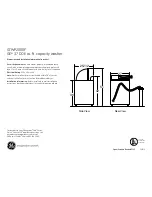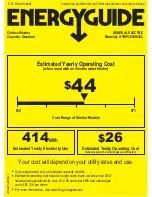
Warning and safety instructions
10
Ensure that the connection data on the dishwasher’s data plate
(fuse rating, frequency and voltage) match the mains electricity
supply. This data must correspond in order to avoid the risk of
damage to the dishwasher. Compare these before connecting the
appliance to the mains. If in any doubt, consult a qualified
electrician.
Do not connect the dishwasher to the mains supply until it has
been fully installed and any adjustment has been made to the door
springs.
The dishwasher may only be operated if the door opening
mechanism is working correctly. Otherwise there could be a risk of
danger whilst the automatic door opening mechanism (depending on
the model) is active.
To check that the door opening mechanism is working correctly:
- The door springs must be evenly adjusted on both sides. They are
correctly adjusted when the door remains stationary when left half
open (approx. 45° opening angle). It is also important that the
door cannot fall open.
- The door locking pins automatically retract when the door opens
at the end of the drying phase.
Multi-socket adapters and extension leads do not guarantee the
required safety of the appliance (fire hazard). Do not connect the
dishwasher to the mains electricity supply using a multi-socket
adapter or an extension lead.
The dishwasher must not be used in a non-stationary location
(e.g. on a ship).
Do not install the dishwasher in a room where there is a risk of
frost occurring. Frozen hoses are at risk of tearing or bursting. The
reliability of the electronic control unit may be impaired at
temperatures below freezing point.
To avoid any damage to the dishwasher, it must only be operated
when it is connected to a fully vented plumbing system.
Summary of Contents for G 7960 C SCVi
Page 122: ......











































